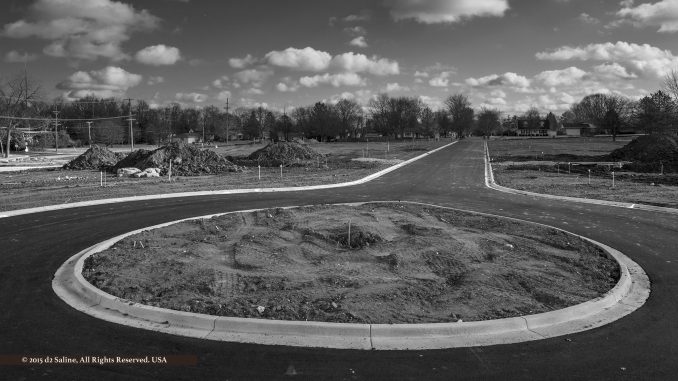
On April 4, 2017 legislation went into effect at the state level aimed at clarifying the regulation of ownership and operation of unmanned aircraft. As part of the same Act, an Unmanned Aircraft Systems Task Force was created to develop statewide policy recommendations. [1,2]
Last November, that Task Force issued its Final Report. [3]
The Michigan House of Representative then took up this Report as part of its current legislative session. It passed a package of four bills by overwhelming, bipartisan majorities, and sent them over to the Michigan Senate two weeks ago. [4]
In an exclusive interview with Saline Journal, our State Representative Donna Lasinski began that discussion by emphasizing that legislators are “very clear that aircraft are regulated by the FAA, federally.” What is less clear, she then said, are those things happening in air space under 400 feet and outside of “protective bubbles” specifically addressed by the FAA. Things such as prohibitions against drone flights within certain proximety of airports. [5]
Having Task Force recommendations is one thing; but drafting legislation to actually address the issues that had been identified posed a large set of challenges. “It is difficult for us to say ‘you can do this, but not that’ for every conceivable situation,” Representative Lasinski explained.
That’s why she expressed great satisfaction with House Bill 5494 in particular, describing it as “a very elegant way of doing this.” [6]
In essence, the “extension of self” approach says: “If it’s illegal for you to do yourself, it’s illegal if done by drone” that you own or are operating. In this way, a manageable package of legislation brings all permissions and prohibitions of the individual to concerns about the regulation of ownership and operation of unmanned aircraft.
“If you hit someone with your fist, it’s battery,” said Representative Lasinski by way of illustration. “Now, if you hit someone with a drone, it’s battery. You can’t use as a defense, ‘the drone did it.’ You can’t say, ‘I’m not responsible, the wind caught the drone.'”
Locally, drones are readily available for immediate purchase at price points anywhere from less than a hundred dollars to $1300 and up. In discussions with floor clerks in two of the leading unmanned aircraft sellers in the area earlier this week, Saline Journal was told that a buyer with “no experience” would be “doing anything you want” with the Yuneek Typhoon H Plus hexacopter “in fifteen minutes.” [11]
When Saline Journal researched unmanned aircraft available for consumer purchase in late 2016, every conversation at that time — every store, every visit — began with a salesperson pointing out in no uncertain terms the need for formal operator training and registration all drones weighing more than half a pound. [12]
Two days ago, neither retailer employee knew “if registration is even required anymore.” In fact, registration is very much required. [13,14,15]
Although admittedly anecdotal, experiences such as those above reinforce the idea that Michigan legislators are taking necessary steps here, timely. Accordingly, House Bill 5494 passed 108-1, House Bill 5495 passed 104-5, House Bill 5496 passed 107-2, and House Bill 5498 passed 102-7 on March 22, 2018.
A final and perhaps not surprising area of interest for Saline Journal was the prospect of newfound concerns for photographers who might wish to use drones for arial still or video work. Our State Representative is sympathetic to this, noting that “what is permissable for you to do is permissable for ‘you’ as a drone.”
There are also alternatives to the use of drones for capturing images from elevation. [16]
References
- “Public Act 436 of 2016” (January 3, 2017) State of Michigan.
- “Unmanned Aircraft Systems Task Force” Office of Governor Rick Snyder.
- “Unmanned Aircraft Systems Task Force: Final Report” The Honorable Triston Cole, Chair (November 20, 2017) State of Michigan Department of Transportation.
- “State Representative Donna Lasinski” (March 30, 2018) Facebook.
- “Unmanned Aircraft Systems” Federal Aviation Administration.
- “House Bill 5494 (2018)” Michigan Legislature.
- “House Bill 5495 (2018)” Michigan Legislature.
- “House Bill 5496 (2018)” Michigan Legislature.
- “House Bill 5498 (2018)” Michigan Legislature.
- “Amend Unmanned Aircraft Systems Act” (March 12, 2018) House Fiscal Agency.
- “Introducing Typhoon H Plus” Yuneek.
- “FAA Small Unmanned Aircraft Registration Begins Dec 21” (January 20, 2016) Federal Aviation Administration (FAA).
- “UAS Registration” FAA.
- “New law reinstates small drone registration in the USA” Ben Popper (December 12, 2017) The Verge.
- “Examples of unmanned aircraft that do and do not require registration” FAA.
- “Conspicuously Elevated Camera Positioning Can ‘Make’ Certain Photographs” Dell Deaton (February 24, 2017) Saline Journal.



